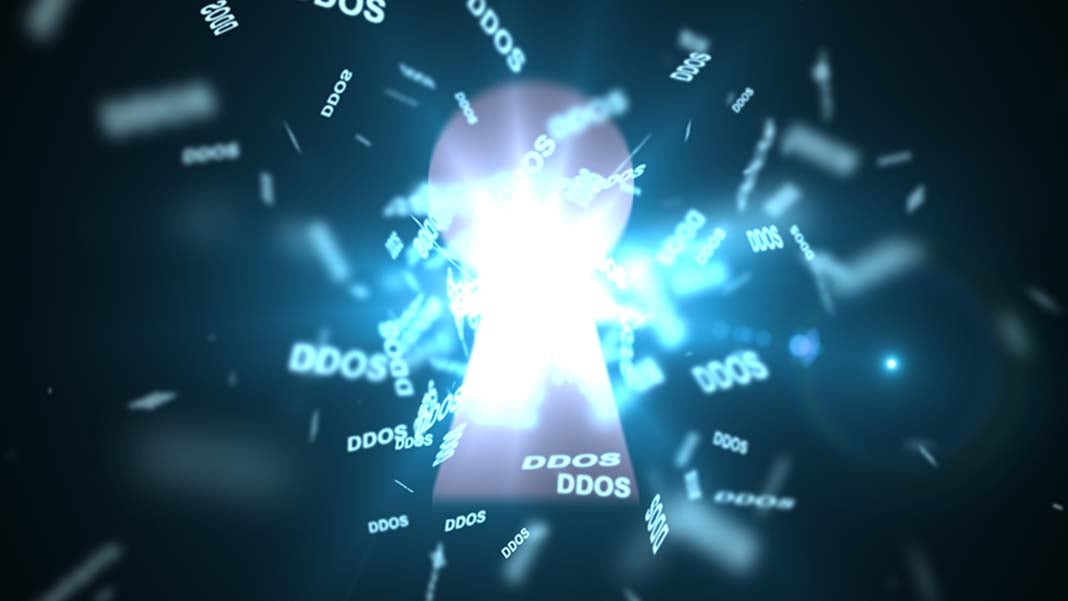What Do White Supremacists and a History of Hacktivism Have in Common with DDoS Attacks?
By: Debbie Fletcher

Much of the United States and the world beyond watched in frustration as events unfolded recently in Charlottesville, Virginia. Frustration that the rally was happening in the first place, frustration over the violence, including the beating of Deandre Harris and the death of Heather Heyer, and frustration over the seeming inaction of the Charlottesville police department.
What can you do, however, when you’re nowhere near Charlottesville and commiserating on Twitter or in forums doesn’t feel like enough? Just like their hacktivist predecessors before them, Anonymous has, unfortunately, answered that question with DDoS attacks.
Protest parallels
There may not seem to be a natural link between a cyberattack and a march or protest, but consider the fact that DDoS stands for Distributed Denial of Service. It is a type of cyberattack that leverages the collective computing resources of a botnet in order to either clog the network of a victim website, or exhaust its server or other resources.
Regardless of which strategy is used, the end result of a successful DDoS attack is a website that is taken offline, keeping users from having any access to it, disrupting its business, and often gaining a good amount of attention in the process.
In a way this can mirror both sit-ins and protests. The point of a sit-in is to occupy a building or place and keep it from being able to conduct its business. The point of a demonstration or protest is to make known an opposition to an ideology, issue, action or law, potentially also disrupting another group, business or entity and their activities, such as in the case of the Charlottesville protest. With sit-ins, demonstrations and protests, a secondary goal is always drawing attention to the issue at hand.
Anonymous activities
Anonymous is a well-known collective that has been perpetrating politically and socially motivated DDoS attacks over the last few years. Their Charlottesville activities began during the “Unite the Right” rally itself as they DDoSed the website altright.com, a favorite of the far-right groups, including white supremacists.
They returned to action in what they called #OpDomesticTerrorism (operation domestic terrorism) after violence exploded between the Unite the Right groups and counter-protesters, taking down the Charlottesville city website in response to what they called a lack of action from Charlottesville police. Additionally, Anonymous has been targeting white supremacist websites with distributed denial of service attacks.
These attacks follow high-profile DDoS attacks on hate group Westboro Baptist Church, child pornography websites, US government agencies, the Brazilian government for its involvement in the 2014 FIFA World Cup, and corporations including Sony, PayPal, MasterCard and Visa.
It takes technical skill to launch the kind of attacks Anonymous does, so while not just anyone can perpetrate a DDoS attack, Anonymous has found a way to let anyone with an internet-connected device assist them: with so-called voluntary botnets, to which anyone can donate the resources of their computer or device.
Carrying on a tradition
While Anonymous have certainly been successful in their endeavors, gaining worldwide attention and even being named one of Time magazine’s 100 most influential in 2012, the idea of DDoS attacks as a protest isn’t novel, nor is the idea of the voluntary botnet.
Distributed denial of service attacks being used as a form of protest actually dates all the way back to a time over 20 years ago. A group out of Italy called the Strano Network knocked the French government’s website offline in protest of the country’s nuclear policy in 1995.
The voluntary botnet originated with a group called the Electronic Disturbance Theater, who built a DDoS tool called FloodNet in 1998 that allowed people outside of the organization to help them in what they called their virtual sit-ins – DDoS attacks on the White House and other political websites.
This group is still operating today as the Electronic Disturbance Theater 2.0. It is currently known for its Transborder Immigrant Tool, a mobile app that provides directions – in the form of poems – to water caches in the southern California desert to immigrants crossing the border between the United States and Mexico.
DDoS drawback
As easy as it may seem for some to cheer on the likes of Anonymous these days, the vast majority of distributed denial of service attacks are not used as a form of protest or sit-in, but are instead cyberattacks that target websites and businesses with the intent of doing real damage.
As such, DDoS attacks are illegal, and hacktivist groups are at risk of serious prison time right alongside cybercriminals. While peaceful protests and sit-ins are protected by law as forms of free speech, DDoS attacks have no such protection.
However, if the Charlottesville incident is any indication, that isn’t going to stop Hacktivist groups like Anonymous, and as rallies and counter-protests ramp up across the United States and the rest of the world, this particular form of protest will probably only grow in popularity.
2313 Views












